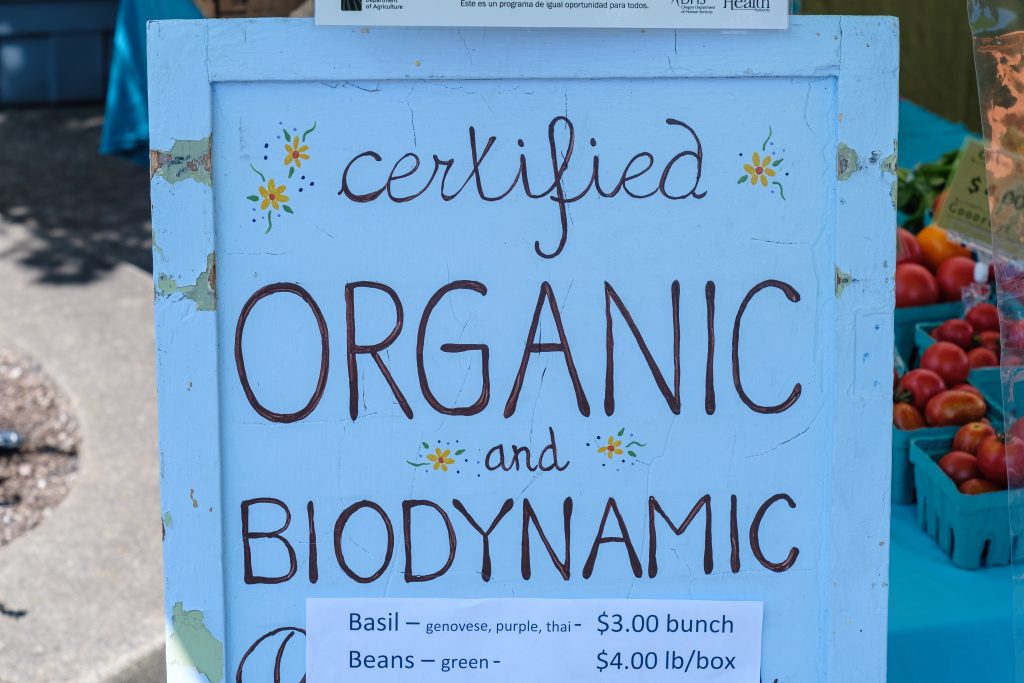Organic and Biodynamic
Organic and Biodynamic
Putting dinner (and breakfast and lunch) on the table these days takes some effort. There is certainly more fine print involved than there was 50 years ago. The words “organic” and “biodynamic” are being found on more and more labels. But do consumers really know what they mean? And are they always better for you? Let’s take a closer look.
Organic Defined
The word “organic” refers to the way that agricultural products are grown and processed. The USDA National Organic Program (NOP) sets the regulations for organic agricultural products that are produced in the U.S. and those that are imported into the U.S. for sale. These regulations state that for a crop to be labeled as organic it must be grown without the use of synthetic herbicides, pesticides, fertilizers, or GMOs (bioengineered genes).
For products such as meat, eggs, and dairy to be labeled organic the animals need to be raised in living conditions that accommodate their natural behaviors (such as the ability to move freely on open pasture). They also need to eat organic feed and forage. Antibiotics, growth hormones, or any animal by-products cannot be given to them.
100% Organic
Despite these standards, not all organic is created equally. You must carefully read labels to be sure of what you are purchasing. A product is only labeled “organic” if it contains at least 95% organically produced ingredients (excluding water and salt). The other 5% of ingredients must be non-agricultural substances that can be found on the NOP National List of Allowed and Prohibited Substances. If a product meets these criteria, it can display the USDA organic seal on the product packaging and in product advertising.
Made with Organic
A product containing at least 70% organic ingredients can claim that it is made with organic ingredients. We’ve all seen frozen pizzas and soup packaging that says “made with organic vegetables.” These products must also follow NOP guidelines, however, the USDA organic seal cannot be used on the packaging.
Products containing less than 70% organic ingredients cannot have the word “organic” appear on the packaging or in marketing. They can, however, indicate which ingredients are organic in the ingredients statement on the label. It is important to be aware that when phrases such as “free range,” or “hormone free” are used, they do not relate to nor do they substitute for organic. Just because the chicken was allowed to roam free doesn’t mean it was fed an organic diet.
Biodynamic
The term biodynamic has begun to be used on labels in addition to the word organic. So what does it mean? According to Elizabeth Candelario, managing director of Demeter, the global certification program for biodynamic farms:
Biodynamic is an ecological farming method that looks at the farm as a living organism: self-sustaining, self-contained, and following the cycles of nature.”
Biodynamic farming methods actually build on organic standards. They do this by adding additional layers of requirements around how the farm and its soil are managed. As Candelario goes on to say:
Our health is intimately connected to the health of our farms and our planet. The healthier the soil, the healthier the food, the healthier the person, the healthier the planet.
100:100
With the abundance of chemicals found in our air and water these days, it is good to know what you can do today to keep the food you and your family eat as healthy and nutritious as possible. Making healthy choices is an important part of living your 100 Year Lifestyle.
So is keeping the your body as healthy as possible so it can deal with all the environmental stressors that we all deal with today. So find a local, organic farmer, and a 100 Year Lifestyle provider near you to make the best possible choices for your health and the health of your family!
- SHARE THIS POST



